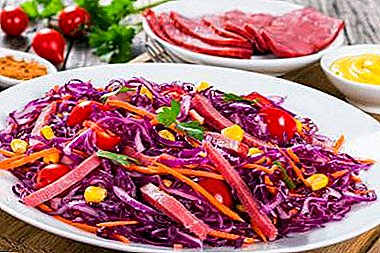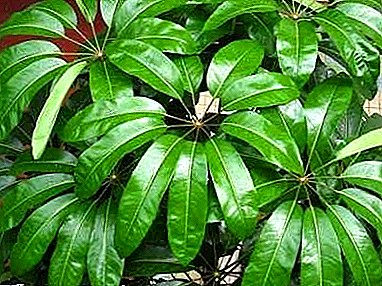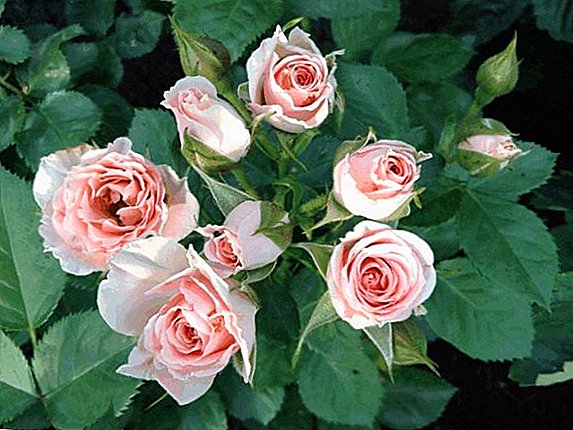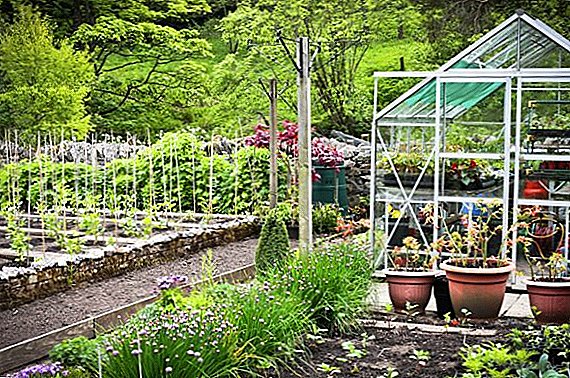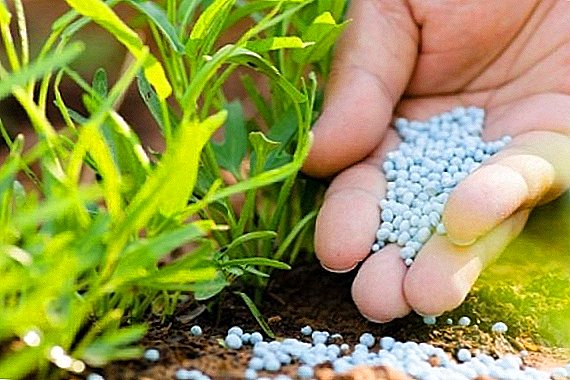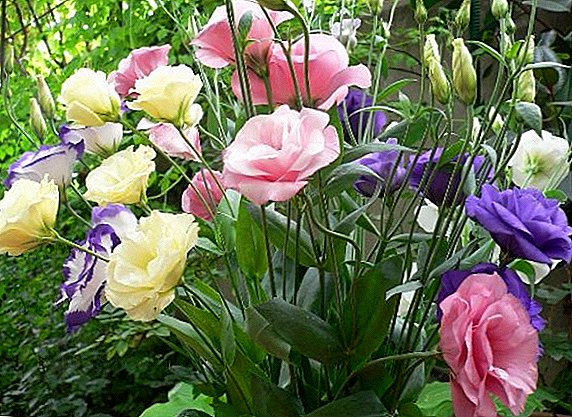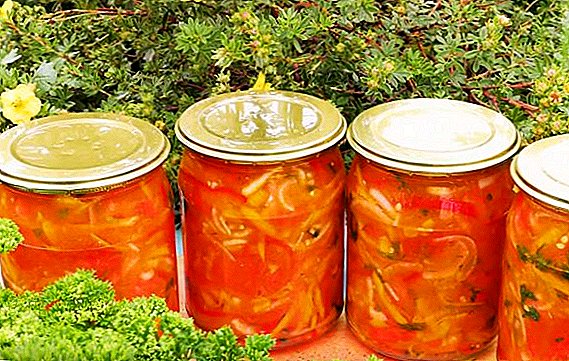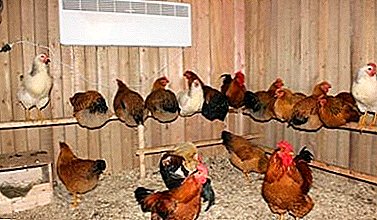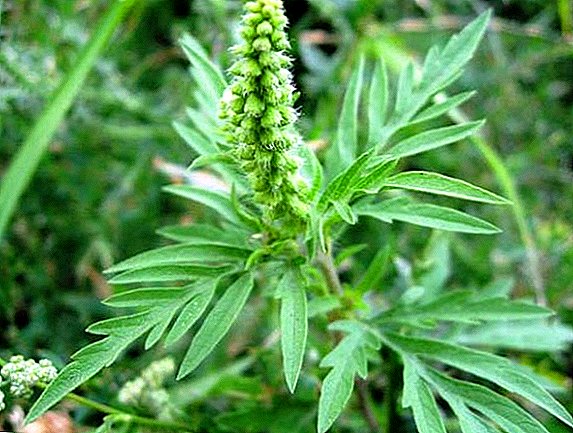 One of the most famous weeds in our strip is ragweed. It is known not only for its wide distribution, but also for its influence on a person. A huge number of people suffer from allergic reactions during the flowering of this weed. He is also known for its indestructibility. Every year, gardeners and gardeners struggle with it with all their might, and in some regions the question of this struggle is put at the level of local authorities, but so far most of the efforts have been unsuccessful. Nevertheless, this question has a pleasant side: ambrosia also has medicinal use.
One of the most famous weeds in our strip is ragweed. It is known not only for its wide distribution, but also for its influence on a person. A huge number of people suffer from allergic reactions during the flowering of this weed. He is also known for its indestructibility. Every year, gardeners and gardeners struggle with it with all their might, and in some regions the question of this struggle is put at the level of local authorities, but so far most of the efforts have been unsuccessful. Nevertheless, this question has a pleasant side: ambrosia also has medicinal use.
The chemical composition of ambrosia
Medicinal properties of ambrosia provides its composition. So, it contains essential oils, biologically active substances, trace elements, vitamins that help support the body and fight against various diseases. But only its polynolistny look. used in treatment.
Did you know? The natural habitat of the plant is North America. Until the end of the XVIII century in the territory of Eurasia it was not to be found, but in 1873 the plant was accidentally brought to the continent with red clover seeds.

Did you know? Ambrosia wormwood - a plant with beautiful carved leaves, which has a no less beautiful history of the origin of the name. Ambrosia, the ancient Greeks called the food of their gods, as well as fragrant ointment, which was used to treat various diseases. Since the leaves of the plant resembled the leaves of wormwood, it received a slight clarification in the name.
The aerial part is rich in camphor, sesquiterpenoids, cinerol, quercetin, hydroxycinnamic acids, coumarin, salonitenoid, isoramnentin, isobelin, dihydrocumanine, psilostaquinin C, diacetate.
In medicine, use all parts of the plant, up to pollen, which annoys people during flowering due to the high content of ambrosic acid. Ambrosia seeds contain the main part of fragrant essential oils (18%), which the plant is rich in. However, you need to be careful with them, since excessive inhalation can cause headaches.

Over time, scientists have discovered that the plant contains psilostachiin and dihydropartenolide, which actively inhibit the reproduction of cancer cells. This property of the plant began to be used in the treatment of malignant tumors.
Some plants contain substances that prevent malignant tumors. Among them are kohlrabi cabbage, black chokeberry, blackcurrant, rapeseed, safflower.
If you have time to prepare the plant before its flowering, it will retain the maximum concentration of carbohydrates and various beneficial substances.
What is useful: medicinal properties
Due to the chemical composition of the ambrosia herb used to treat fever, dysentery, diarrhea, it also removes worms and other parasites that multiply in the gastrointestinal tract. Due to its bactericidal properties, it also treats bruises and wounds. They are also used to relieve pain with radiculitis and osteochondrosis.
The plant has a large number of nickel-organic compounds. It helps to reduce the amount of sugar in the blood, normalize blood pressure. The special composition of nutrients contributes to the regeneration of red blood cells, white blood cells, prevents leukemia, improves blood formation.
Important! The place where ambrosia grows is very quickly dried, as the plant intensively draws all the beneficial substances from the soil. Therefore, other cultures do not grow close to ambrosia, and it quickly regains territory for itself. At the same time, its roots reach four meters deep, and the seeds remain viable for 40 years.
Is it used in official medicine?
Ambrosia is used in official medicine. Despite the fact that the plant is a strong allergen, it often acts as a basis for antihistamine drugs: tablets and extracts.
As used in traditional medicine
For the manufacture of medicines selected various oil and alcohol extracts, tinctures, tinctures for external or internal use. In some cases, allowed the use of sap plants.
Fresh leaves and juice for compresses in osteochondrosis and radiculitis
It is noticed that in the treatment of sciatica, edema, tumors, osteochondrosis, a fresh plant helps a lot. To do this, it is enough to collect its leaves, stretch it and apply it to sore points as a compress. It is no less effective to squeeze the juice from the plant and rub it into places of concentration of pain.

Recipe infusion gastritis and enterocolitis
To prepare the infusion, the dried leaves of the plant are crushed and two tablespoons of 300 ml of boiling water are poured. Give brew for half an hour, filter, and then take 2 tbsp. l., at least three, maximum six times a day. With this infusion, not only enterocolitis and gastritis are treated, but also fever and rectal cancer. As an external remedy it helps with sprains and arthritis.
Recipe tincture with neurasthenia and a tendency to convulsions
To prepare the tincture using flowers of the plant, you can even whole brushes. Inflorescences need to be well grind and pour vodka. Ingredients are taken in proportions of 1: 5. The tincture is prepared for about a week by hiding the vial in a dark place. Then you can take 25 drops before a meal 30 minutes before it three times a day. Reception should last three months. Tincture helps not only with convulsions and neurasthenia, but also in the case of various diseases of the gastrointestinal tract.
Muscle cramps can also be quenched with the help of horseradish, milkwort, sage meadow, chubushnik, dill.
Prescription oil extract for the treatment of ulcers and difficult healing wounds
Ambrosia oil is made from fresh leaves and flowers. They need to be collected, crushed and filled with mustard, olive or rapeseed oil in a ratio of 1: 5. Capacity is removed in a dark place for two weeks. After this period, the tincture can be used as an external agent for the treatment of wounds and ulcers, as well as various mucosal lesions.

What is dangerous: contraindications and signs of an allergic reaction
In addition to the above useful properties of ambrosia quite dangerous, especially when it blooms. Pollen plants - the most dangerous part of it for humans. It is very small, easily penetrates the respiratory tract, and once on their mucous membrane causes a very strong irritation, leading to an allergic reaction of varying intensity: from hay fever to severe asthma attacks.
Also avoid contact with the plant should be during pregnancy, breastfeeding, the presence of a history of other allergic reactions. In any case, before using the plant and any drug based on it, you should consult with your doctor and make a trial use.
First aid for allergies
If there is confidence that it was the ragweed that caused the allergic reaction, first of all, you should stop any contact with the plant. If a person feels weak or dizzy, it should be laid so that improve blood flow to the brain: Also release the neck to provide better air flow. If a person falls into a panic, he should be calmed down and given an antihistamine. In case of severe breathing with the nose, it should be instilled with any vasoconstrictor.
Important! Symptoms of allergies caused by ambrosia do not have any special characteristics. It is difficult to distinguish from an allergic reaction caused by any other active substance. But specifically ambrosia causes similar reactions in August-September.
If the allergic reaction is very severe, you must call an ambulance. Until she arrives, in addition to the actions described above, you can relieve asthma attacks with an aerosol inhaler, if you have it.
Ambrosia is a dangerous allergen and unkillable weed. For many years, the struggle with him does not bring any results. But the discovered beneficial properties of the plant help people to benefit from its existence.


